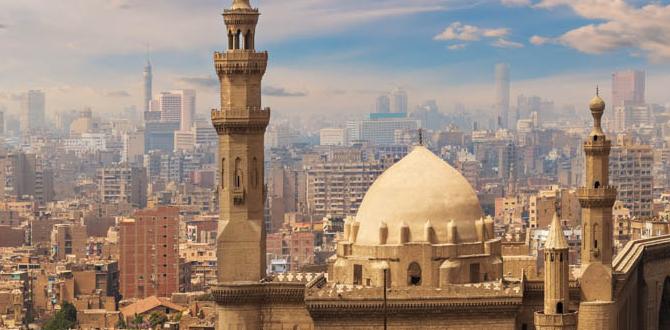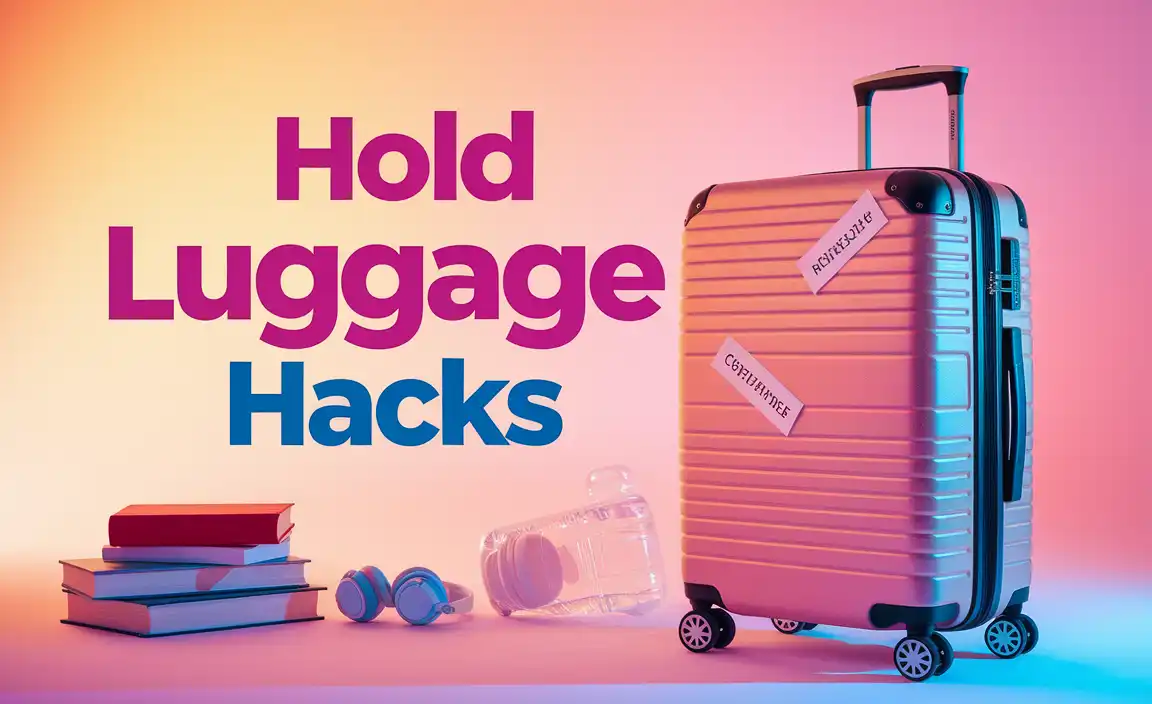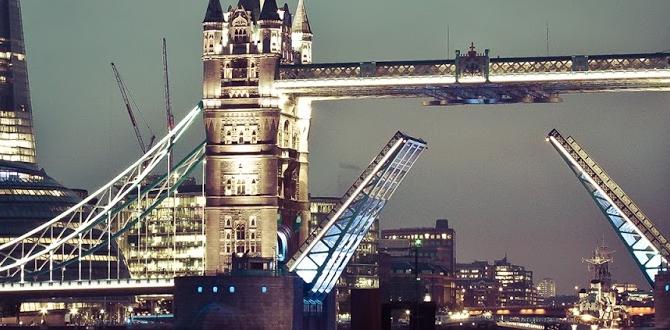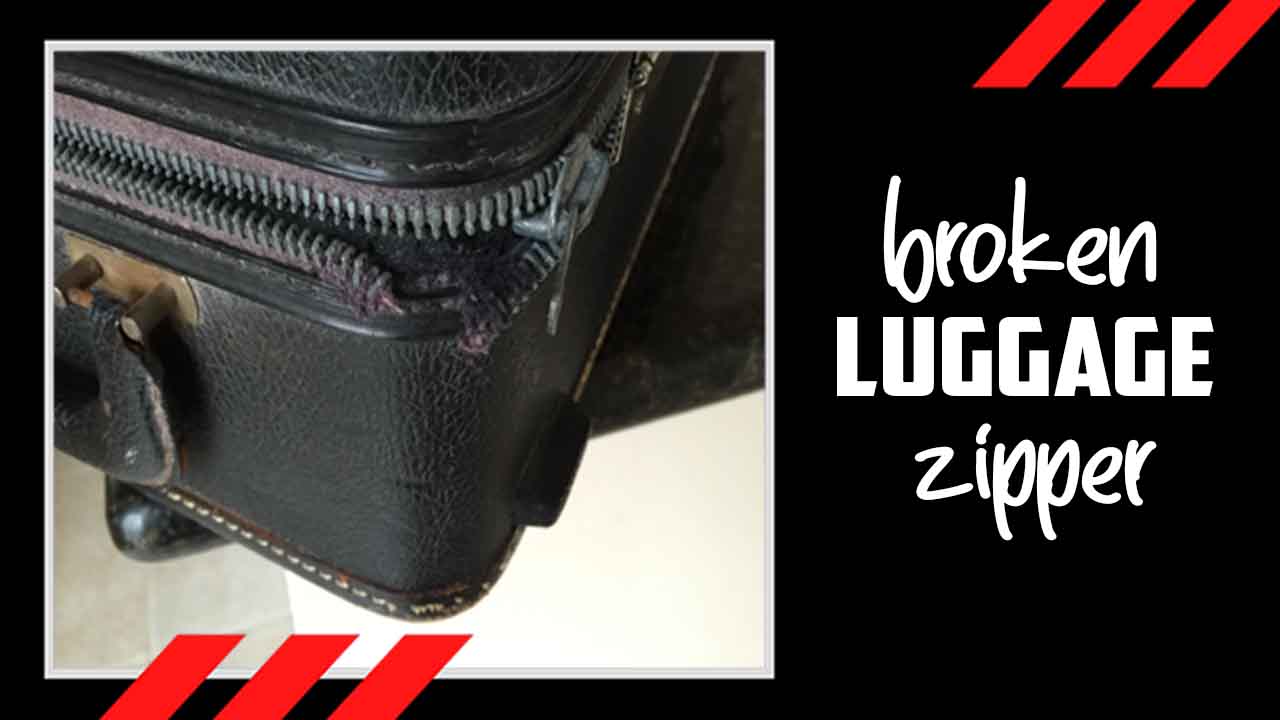Planning a Banff winter trip? This guide offers essential tips for a memorable and stress-free adventure, covering packing, activities, essential gear, and navigating the magical winter wonderland like a pro.
Dreaming of Banff in winter? Imagine snow-dusted peaks, frozen lakes, and crisp mountain air. It’s a magical time, but preparing can feel a bit overwhelming, especially if it’s your first time. Don’t worry! We’ll break down everything you need to know to make your Banff winter trip comfortable, fun, and absolutely unforgettable. From what to pack to the best way to see the sights, we’ve got your back, ensuring every step of your journey is as smooth as the fresh powder.
Embarking on Your Banff Winter Adventure: What to Expect
Banff National Park transforms into a winter paradise, offering a unique blend of serene beauty and thrilling activities. The iconic turquoise lakes freeze over, creating stunning icy canvases perfect for skating and photography. The surrounding mountains become a playground for skiers, snowboarders, and snowshoe enthusiasts. While the days are shorter and colder, the crisp air and breathtaking scenery are unparalleled. It’s important to remember that winter in the Rockies is serious business, so preparation is key to enjoying its full splendor safely and comfortably.
Your Banff Winter Packing Checklist: Staying Warm and Cozy
Packing smart for a Banff winter trip is like layering for success. The key is to stay warm without feeling bulky. Think layers, waterproof everything, and accessories that make a big difference.
The Base Layer: Wicking Away Moisture
Your first line of defense against the cold is a good base layer. This should be snug against your skin and made of moisture-wicking material like merino wool or synthetic fabrics. Avoid cotton, as it holds moisture and will leave you feeling cold and clammy.
- Thermal underwear (long johns and long-sleeved tops)
- Moisture-wicking socks (merino wool is excellent)
- Underwear made from synthetic materials
The Mid Layer: Insulation is Key
This layer traps body heat. Fleece jackets, down vests, or wool sweaters are perfect. You might need one or two mid-layers depending on how cold it is and your activity level.
- Fleece jacket or pullover
- Insulated vest
- Lightweight down jacket
- Warm sweater
The Outer Layer: Protection from the Elements
This is your shield against wind, snow, and rain. A waterproof and windproof jacket and pants are non-negotiable. Look for features like taped seams and adjustable hoods.
- Waterproof and windproof winter jacket
- Waterproof and windproof snow pants or ski pants
Essential Accessories: Don’t Forget These!
These small items can make a huge difference in your comfort. Hands, feet, and head lose heat quickly, so protecting them is vital.
- Warm, waterproof gloves or mittens
- A warm hat that covers your ears
- A scarf, neck gaiter, or balaclava
- Wool or insulated socks (bring extras!)
- Waterproof winter boots with good traction
- Hand and foot warmers (optional, but great for extra cold days)
Footwear Considerations: Stepping Out in Safety and Comfort
Your feet are your foundation. In Banff, you’ll encounter snow and ice. Invest in good quality, waterproof winter boots. They should be insulated and have non-slip soles to prevent falls. Ensure they are roomy enough to wear with thick socks without being too tight, which can restrict circulation and make your feet colder. If you plan on hiking or doing more strenuous snow activities, consider bringing specialized footwear.
Staying Prepared for Extended Comfort: Beyond the Basics
For longer trips or if you have specific needs, consider bringing items that enhance your comfort and reduce stress, especially if traveling with children or if you require personal care aids. Having reliable solutions for personal absorbent products, for example, can ensure peace of mind and prevent potential discomfort or embarrassment during your travels.
- A small backpack for day trips.
- Reusable water bottle (hot drinks are also available for purchase).
- Sunscreen and lip balm with SPF (the sun reflects off the snow).
- Sunglasses or goggles.
- Portable phone charger (cold weather drains batteries quickly).
- Camera and extra batteries.
- Personal toiletries and any necessary medications.
- If you require adult or child diapers for added security and comfort, pack an adequate supply. Consider discreet and highly absorbent options for daytime activities and overnight use to ensure you can enjoy your trip without worry.
Navigating Banff in Winter: Transportation and Getting Around
Getting to and around Banff in winter requires some planning. Main roads are well-maintained, but conditions can change rapidly.
Getting to Banff
The nearest major airport is Calgary International Airport (YYC). From Calgary, you have a few options to reach Banff:
- Shuttle Services: Numerous shuttle companies operate between Calgary Airport and Banff. This is a convenient and popular option. Booking in advance is recommended.
- Rental Car: Renting a car gives you flexibility, but be prepared for winter driving conditions. Ensure the rental company provides winter tires. Check road conditions before you leave.
- Public Transit: While less direct, it’s possible to take public transit from Calgary to Banff, though it’s a longer journey.
Getting Around Banff and the Surrounding Areas
Once in Banff townsite, it’s quite walkable. For exploring further afield, consider these options:
- Park & Ride Shuttles: During peak times and for popular destinations like Lake Louise and Moraine Lake (access may be restricted in winter), Parks Canada operates shuttles. Check their schedule and booking information.
- Roam Public Transit: Banff has a local bus system that can take you to many attractions within the town and surrounding areas. This is a great eco-friendly option.
- Ski Shuttles: If you plan to visit Sunshine Village, Lake Louise Ski Resort, or Mt. Norquay, dedicated ski buses are usually available from the townsite.
- Driving and Parking: If you have your own vehicle, be aware that parking at popular sites can be limited and may require a fee. Always check road conditions on Alberta 511.
Pro Tip: For extended comfort and peace of mind, especially when traveling with younger children or if you have personal care needs, carrying a discreet travel bag with essential items like clean diapers, wipes, and a change of clothes can be a lifesaver for unexpected spills or needs. This ensures you are prepared for any situation while out and about.
Must-Do Winter Activities in Banff
Banff offers an incredible array of winter activities. Whether you’re an adrenaline junkie or seeking tranquility, there’s something for everyone.
1. Explore the Frozen Lakes
While not always possible or safe for walking on, the views of frozen lakes like Lake Louise and Moraine Lake (access may be limited in winter, check Parks Canada) are spectacular. You can often rent ice skates and glide on designated clearings on Lake Louise. The Fairmont Chateau Lake Louise often offers skating rink maintenance.
2. Skiing and Snowboarding
Banff is home to three world-class ski resorts:
- Sunshine Village: Known for its high elevation and abundant natural snow.
- Lake Louise Ski Resort: Offers incredible views and varied terrain.
- Mt. Norquay: The smallest but often has the least crowded slopes and is great for families.
3. Snowshoeing and Winter Hiking
Discover pristine trails through snow-laden forests. Popular spots include Johnston Canyon (be very cautious of ice and wear ice cleats), Tunnel Mountain, and the trails around Lake Minnewanka. For a more guided experience, join a guided snowshoe tour.
4. Ice Skating
Besides Lake Louise, the town of Banff has an outdoor rink at the Forest Lawn playground, and many local ponds are maintained for skating when conditions are safe. Always check local advisories before stepping onto any frozen surface.
5. Wildlife Viewing
Winter is a great time to spot local wildlife. Keep an eye out for elk, deer, bighorn sheep, and possibly even wolves or bears (though they are less active). Remember to always maintain a safe distance and never feed the animals.
6. Soak in the Banff Upper Hot Springs
After a day out in the cold, there’s nothing better than relaxing in the natural mineral hot springs. Enjoy the panoramic mountain views while you soak your muscles. It’s a perfect way to unwind.
7. Ice Cave Tours and Icewalks
With a guided tour, you can explore stunning ice formations. Johnston Canyon Icewalks are particularly popular, leading you behind frozen waterfalls. These tours require proper gear and knowledge of the terrain, making guides essential for safety.
8. Scenic Drives and Viewpoints
Even if you’re not skiing, the scenic drives are breathtaking. The Icefields Parkway (Highway 93 North) is usually open and offers unparalleled mountain vistas. Stop at viewpoints like Bow Lake and Peyto Lake viewpoint (access to Peyto Lake might be limited in winter, check Parks Canada). Always ensure your vehicle is winter-ready and check road conditions.
Essential Gear for Winter Activities
Beyond your general packing list, specific gear can enhance your experience and safety during winter activities.
For Hiking and Snowshoeing:
- Waterproof hiking boots: Ensure they have good ankle support and insulation.
- Ice cleats or microspikes: Absolutely crucial for walking on icy trails to prevent slips. They can be easily attached to your boots.
- Gaiters: These keep snow from getting into your boots.
- Trekking poles: Provide stability on uneven and slippery terrain.
For Skiing and Snowboarding:
- Ski or snowboard equipment: Rent or bring your own.
- Helmet: Safety first!
- Goggles: Protect your eyes from snow, wind, and sun glare.
- Ski socks: Thinner than regular winter socks but made of wool or synthetic material.
For General Comfort and Safety:
- Hand and foot warmers: Disposable chemical warmers can be a lifesaver on extremely cold days.
- Thermos: For carrying hot beverages.
- First-aid kit: Always a good idea for any adventure.
- Headlamp: Essential for early mornings or late evenings, especially if you’re out after dark.
Traveler’s Comfort Note: For young children or individuals who may need them, having readily accessible and comfortable diaper solutions is paramount. Pack extra changes of child diapers or adult diapers in your daypack, along with wipes, ensuring a stress-free experience even when venturing out for extended periods. Discreet carrying cases can add an extra layer of confidence.
Planning Your Banff Winter Trip: Practical Tips
A little planning goes a long way in making your Banff winter trip seamless and enjoyable.
When to Visit
Banff is magical throughout winter. Each month offers something slightly different:
- December: Festive atmosphere, opening of ski resorts, possibility of early snow. Can be very busy around the holidays.
- January & February: Peak winter. Coldest months, but often with the most reliable snow conditions for skiing and winter activities.
- March: Still good snow, days start getting longer and slightly warmer, but can still be very cold.
Accommodation Tips
Banff townsite offers a range of accommodations, from luxury hotels to budget-friendly hostels and lodges. Lake Louise also has exclusive hotels. Popular spots and times (like Christmas and New Year’s) book up months in advance. Consider staying in Canmore, a neighboring town, for potentially more affordable options.
Booking in Advance
It cannot be stressed enough: book accommodation, rental cars, and popular tours (like Johnston Canyon icewalks or guided snowshoeing) as far in advance as possible, especially if you plan to visit during peak season (December to February) or holidays. Some activities, like the Parks Canada shuttle services, also require advance booking.
Budgeting for Your Trip
Banff can be an expensive destination. Factor in costs for accommodation, transportation, lift tickets (if skiing), activity fees, food, and park passes. Look for package deals or consider visiting in the shoulder seasons (late March) for potentially lower prices. Pack snacks and utilize grocery stores in town to save on food costs.
Parks Canada Discovery Pass: You’ll need a Parks Canada Discovery Pass to enter Banff National Park. You can purchase these online in advance or at entry gates. These passes are essential for all visitors.
Safety First: Winter Conditions
Winter in the Rockies can be harsh. Be prepared for extreme cold, snow, and ice.
- Check weather forecasts and avalanche conditions daily. Parks Canada provides avalanche bulletins for the backcountry.
- Inform someone of your plans if you’re heading out for a hike or any activity, especially if going solo.
- Carry essential safety gear: a fully charged phone, extra layers, water, snacks, a first-aid kit, and navigation tools if venturing into the backcountry.
- Be aware of wildlife. Never approach or feed wild animals.
- Ice safety: Only walk on frozen lakes where it’s explicitly permitted and deemed safe by local authorities or Parks Canada. Indicators like marked skating rinks are usually safe, but venturing onto unmarked ice is extremely dangerous.
Dealing with Cold and Discomfort: Personal Care in Winter Travel
Maintaining personal comfort, especially in extreme cold, is vital for enjoying your Banff winter trip. This extends to everyday needs and can be particularly important for families or individuals who require personal care products.
Managing Cold Fingers and Toes
As mentioned in the packing section, proper layers are key. If you find your extremities are still getting cold, consider using rechargeable hand warmers or disposable chemical warmers. Ensure your boots are not too tight, as this restricts circulation. Take breaks in warm places like cafes or your accommodation.
Staying Hydrated
It might seem counterintuitive when it’s cold, but staying hydrated is crucial. Cold, dry air can dehydrate you faster than you think. Drink plenty of water throughout the day. A portable water bottle is a must, and a thermos for hot beverages is a bonus.
Personal Care Needs and Stress-Free Travel
For travelers who rely on adult diapers or child diapers, planning ahead is essential for a stress-free experience, especially in a winter environment where quick access to facilities might be limited.
- Pack Sufficient Supplies: Ensure you have more than enough adult diapers or child diapers for your trip. It’s better to have extra than to run out.
- Discreet and Secure Options: Look for high-absorbency, discreet options that offer reliable protection. Brands designed for active lifestyles or overnight wear can provide extra confidence.
- Travel-Friendly Packaging: Consider how your supplies are packed. Discreet bags or luggage can help maintain privacy. For families, having a dedicated compartment in a larger bag or a separate small travel case for diapers, wipes, and changes is practical.
- Easy Access: Keep a small supply of diapers and wipes in your daypack for easy access during excursions. This is especially helpful for busy days of sightseeing or when you’re away from your accommodation for extended periods.
- Comfort in the Cold: Ensure that any external clothing layers worn over diapers are not too tight, allowing for comfort and ease of movement. Breathable materials are also beneficial.
By proactively managing these personal care needs, you can focus on the breathtaking scenery and activities Banff has to offer, rather than any potential worries. This preparedness ensures comfort and freedom for all travelers.
Frequently Asked Questions
Q1: Is Banff safe to visit in winter?
Yes, Banff is very safe to visit in winter, provided you are prepared for the conditions. Roads are generally well-maintained, and popular tourist areas are managed for safety. Always check weather forecasts, avalanche conditions if venturing into the backcountry, and ice safety advisories before undertaking any activity.
Q2: What are the best dates to plan a Banff winter trip?
For reliable snow and winter activities, January and February are ideal. December offers a festive feel but can be very busy. March still offers good winter conditions with slightly longer days. The entire period from December to March is considered prime winter season.
Q3: How much should I budget for a Banff winter trip?
A Banff winter trip can range significantly in cost. A budget of $200-$400+ CAD per person per day (excluding flights) is a reasonable estimate, covering accommodation, food, activities, and transportation. This can be lower if you opt for budget accommodation and self-catering, or much higher for luxury experiences and extensive skiing.





